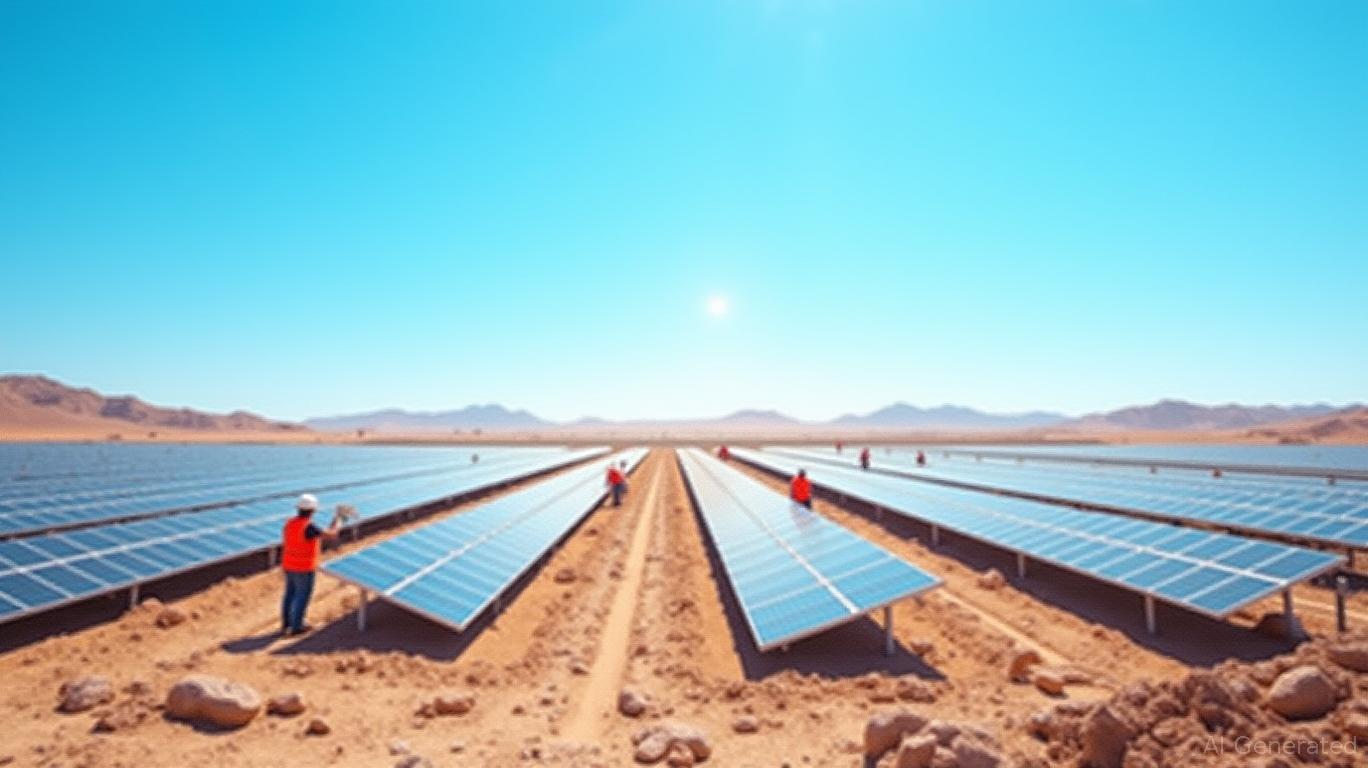Unlocking Middle Eastern Dividend Stocks: A Strategic Guide
Monday, Mar 24, 2025 11:16 pm ET
In the ever-evolving landscape of global investing, high-yield dividend stocks have emerged as a beacon of stability, particularly in volatile markets. For income-focused investors, the Middle East presents a unique opportunity with its high dividend yields and potential for growth. However, navigating this region requires a keen eye for risk and a solid understanding of the economic dynamics at play. Let's dive into the top dividend stocks in the Middle East and explore the strategies to mitigate the risks associated with investing in this region.

The Allure of Middle Eastern Dividend Stocks
The Middle East is home to some of the highest dividend yields in the world, making it an attractive destination for investors seeking stable income streams. Companies like Arab National Bank, Delek Group, and National Bank of Ras Al-Khaimah offer yields ranging from 6% to 8%, providing a compelling case for investment. However, the region's geopolitical tensions and economic uncertainties pose significant risks that investors must navigate carefully.
Top Dividend Stocks in the Middle East
1. Arab National Bank (ANB)
- Dividend Yield: 6.03%
- Overview: Based in Saudi Arabia, ANB benefits from the country's economic diversification efforts and strong financial sector. The bank's robust financial profile and steady dividend payments make it a reliable choice for investors looking for stable income.
2. Delek Group
- Dividend Yield: 8.79%
- Overview: An Israeli energy company, Delek Group offers an impressive dividend yield. The company's diversified portfolio, which includes refining, marketing, and renewable energy, positions it well to capitalize on the growing demand for energy in the region. Delek Group's strong cash flow and commitment to sustainable growth make it a compelling investment opportunity.
3. National Bank of Ras Al-Khaimah (RAKBANK)
- Dividend Yield: 7.58%
- Overview: Based in the United Arab Emirates, RAKBANK benefits from the country's strong economic fundamentals and growing financial sector. The bank's solid financial profile and history of consistent dividend payments make it a reliable choice for income-focused investors.
Risk Mitigation Strategies
Investing in high-yield dividend stocks in the Middle East comes with its own set of risks, including economic instability and political volatility. Here are some strategies to mitigate these risks:
1. Diversification: Spread your investments across different sectors and countries within the Middle East to reduce the impact of economic instability and political volatility. For example, consider investing in a mix of real estate, banking, telecommunications, and energy sectors.
2. Focus on High-Quality Companies: Invest in companies with strong financial profiles and a history of stable dividend payments. For instance, Qatar National Bank, with a strong dividend yield of around 4.6%, is a leading financial services provider in the Middle East and Africa, indicating a robust financial foundation.
3. Monitor Economic Indicators: Keep a close eye on economic indicators such as GDP growth, inflation rates, and unemployment to make informed investment decisions. For example, the World Bank report highlighting the region's high levels of poverty and income inequality suggests that investors should be cautious and look for companies that are resilient to economic downturns.
4. Consider Political Stability: Invest in countries with relatively stable political environments to reduce the risk of political volatility. For example, countries like the United Arab Emirates and Qatar have shown more political stability compared to others in the region, making them potentially safer investment destinations.
5. Evaluate Dividend Sustainability: Ensure that the dividend payments are sustainable by investing in companies with strong cash flow, a healthy balance sheet, and visible growth potential. For instance, Brookfield Infrastructure, which operates a diversified portfolio of infrastructure businesses, has a strong track record of increasing its dividend, with a 9% compound annual growth rate.
6. Use of Financial Ratios: Utilize financial ratios such as the payout ratio and cash payout ratio to assess the sustainability of dividends. For example, Banque Saudi Fransi has a payout ratio of 57.2%, indicating that dividends are covered by earnings, and a cash payout ratio of 52.6%, suggesting coverage by cash flows as well.
Sector Spotlights
# Banking Sector
The banking sector in the Middle East continues to offer some of the most attractive dividend yields. Banks like the Commercial Bank of Dubai PSC (DFM:CBD) and the National Bank of Ras Al-Khaimah (P.S.C.) (ADX:RAKBANK) provide high dividend yields of 6.81% and 7.35%, respectively. These yields are supported by stable earnings and significant market capitalization, which act as buffers against market volatility. For instance, Saudi National Bank (SASE:1180) has a payout ratio of 56.8%, indicating that its dividends are well-covered by earnings.
# Real Estate Sector
The real estate sector is another area of interest for dividend investors. Emaar Properties PJSC (DFM:EMAAR) stands out with a dividend yield of 7.49%, making it one of the top dividend payers in the region. Companies like Panora Gayrimenkul Yatirim Ortakligi (IBSE:PAGYO) generate revenue from various segments, such as REIT - Commercial, which amounts to TRY574.41 million. This diversification helps in maintaining stable income streams. Real estate companies like Emirates Driving Company P.J.S.C (ADX:DRIVE) have shown significant growth in recent years, with a dividend yield of 6.1% and a payout ratio of 66.1%, indicating strong coverage by earnings.
# Energy Sector
The energy sector, particularly companies like Delek Group (TASE:DLEKG), offers high dividend yields of 8.78%. Delek Group has shown strong earnings growth, with a recent increase of 65.7%, which supports its dividend payouts. The company's leadership position in the exploration, development, production, and marketing of oil and gas provides a competitive advantage in the market. However, investors should be aware of the high debt levels, which may impact future stability.
Conclusion
Investing in high-yield dividend stocks in the Middle East can provide significant income opportunities, but it also comes with its own set of risks. By employing diversification strategies, focusing on high-quality companies, monitoring economic indicators, considering political stability, evaluating dividend sustainability, and using financial ratios, investors can better navigate the risks associated with investing in this region. With a keen eye for risk and a solid understanding of the economic dynamics at play, income-focused investors can build a resilient portfolio that provides stable income and growth potential.
In summary, while geopolitical tensions and market volatility pose challenges, the Middle East offers a range of attractive dividend stocks. Investors can mitigate risks by focusing on stable income streams, diversifying their portfolios, and carefully analyzing the financial health of potential investments. The banking, real estate, and energy sectors stand out as areas with high dividend yields and strong earnings coverage. However, investors should be mindful of the sustainability of dividends and the potential impact of geopolitical risks on long-term performance. By adopting a balanced and informed approach, investors can navigate the current economic landscape and benefit from the region's robust economic activities.










I joined the trading world with little to no prior knowledge, but the team led by Catherine E.Russell on Facebook provided me with expert guidance and training on cryptocurrency trading that completely transformed my approach to the market. Their strategies and insights not only increased my understanding of the market dynamics but also helped me make informed decisions backed by in-depth technical analysis.